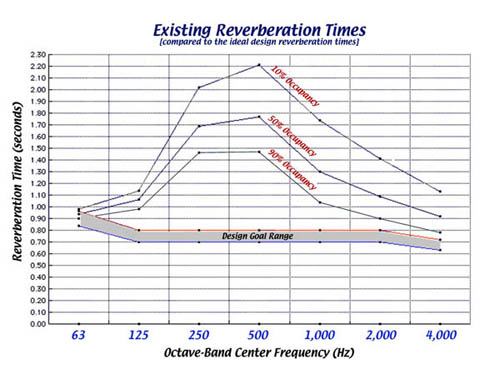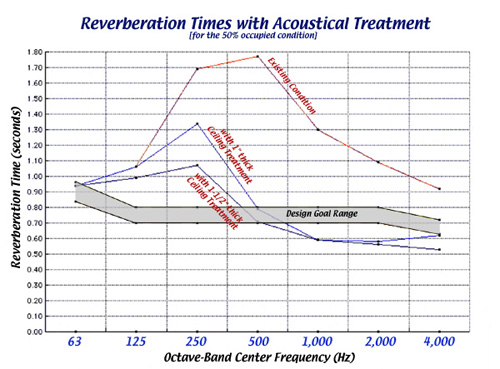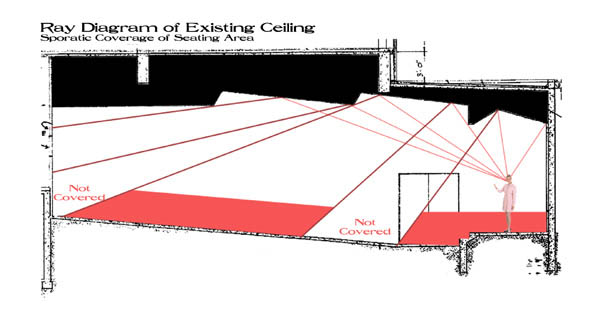|
|
|
|
|
|
|
|
|
|
|
|
|
|
|
|
|
|
|
|
|
|
|
|
|
|
|
|
|
|
|
|
|
|
|
|
|
|
|
|
 |
|
|
 |
 |
|
|
|
|
|
|
|
|
|
|
|
|
 |
|
|
|
|
|
We did calculations to determine the existing reverberation times under different occupancy conditions. As one may have guessed, the existing reverberation times for the room are much higher than they should be. The design goal was 0.8 seconds at 500Hz. The calculated times were 2.21seconds for 10% occupancy, 1.77 seconds for 50% occupancy, and 1.47 seconds for 90% occupancy. So no matter how many people are in there, it's too reverberant. |
|
|
|
|
|
|
|
|
|
|
|
|
|
 |
|
|
|
|
Covering the existing "acoustical plaster" with another spray-on cellulose-based acoustical treatment would be a very economical option. Covering the acoustical plaster with a 1" thick application of International Cellulose Corporation k-13 treatment would reduce the 500Hz reverberation time from 1.77 to 0.79 seconds. Using a 1-1/2" thick application instead would reduce the 500Hz reverberation time from 1.77 to 0.71 seconds, but would also be more effective at reducing the lower frequency reverberation times than the 1" thick treatment. |
|
|
|
|
|
|
The following spreadsheet shows the absorbtion coefficients for each material and the corresponding surface area of each. It also shows some calculated results for options that we explored. |
|
|
|
|
 |
|
|
|
|
|
|
|
|
|
|
|
|
|
|
|
|
At the left is a ray diagram showing the refelctions off of the various ceiling planes. It is clear that not all of the audience areas are covered with even reflections. The rear-most two ceiling planes do not provide any useful reflections. One has to wonder why the architect chose this celing configuration. The lighting soffit above the front of the platform is partiularly problematic. Since the ceiling was covered with "acoustical plaster" anyway, the intent was for the ceiling to be absorptive, so the angles of the ceiling planes do not really even matter. |
|
|
|
|
|
|
|
 |
|
|
|
|
|
 |
 |
 |
 |
 |
|
|
|
 |
 |
 |
 |
 |













